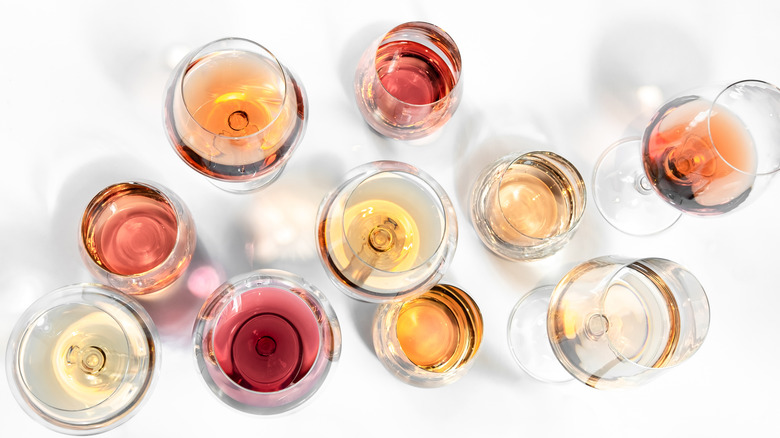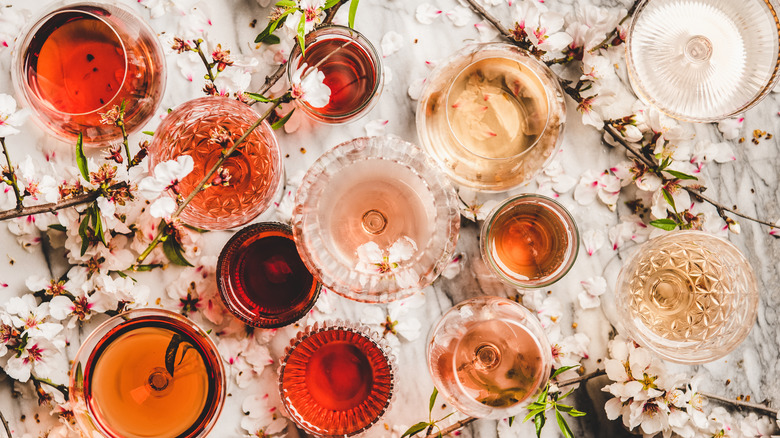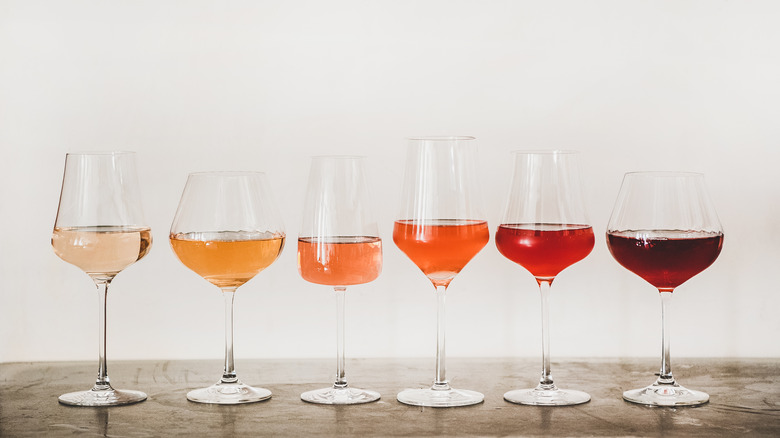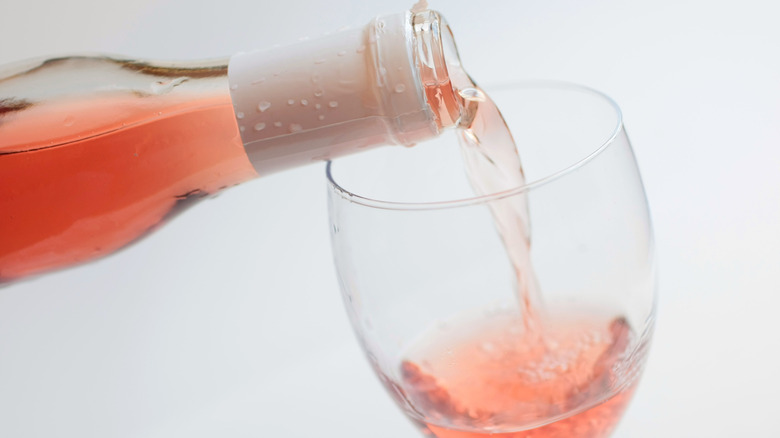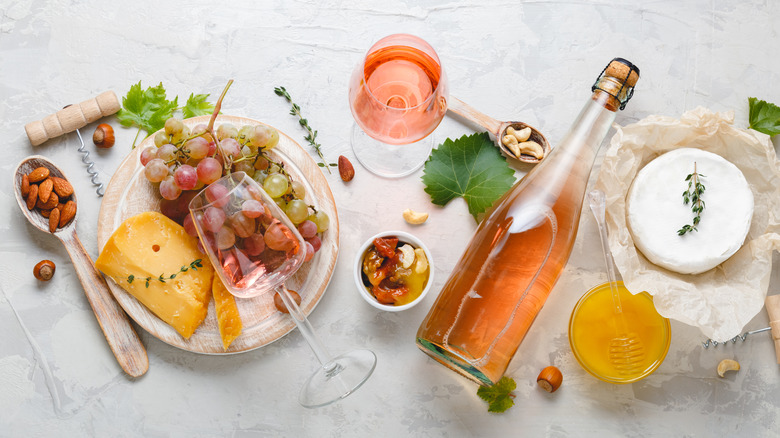Everything You Need To Know About Rosé Wine
For the last few years, you would be hard-pressed not to hear the chant of "yes way rosé" or "rosé all day," as late spring turns into summer. While the pink drink has spawned a lifestyle for summer sipping, this type is actually one that winemakers — and wine drinkers — take seriously.
Rosé wine can be made from any style or blend of red grapes, but it can also include grapes used to make white wine as well. The difference here is the aging process. While red wines can age for weeks in grape skins, rosé wine only touches the skins for a few hours to a week to take on its signature pinkish hue. Rosé wines can be produced using the maceration method (the most common), the Saignée method (when red wine juice is bled off), or the blending method (a mix of white wine and red wine). The result is a pink wine that has notes of red fruit, flowers, melon, and other citrus flavors.
However, rosé wine isn't just one note. There are an array of different types of rosé wines out there on the market, each one with its own qualities.
Types of rosé
Rosé is made around the world in varying wine regions — from Italy to the Napa Valley to Long Island. However, the most dominant styles of rosé come from France and Spain. Provence is one of the most popular French regions for this classic and very emulated winemaking style, according to Wine Enthusiast. The wine here is usually light pink in color with floral and fruit flavors and has a light acidity — perfect for summer sipping. In Spain, the Tempranillo and Grenache grapes lend themselves well to making this style of wine, while the country also churns out several unique styles of rosé — from those that are aged, to those that are dry and bubbly.
With so many different types of rosé wine, you truly can "rosé all day" in many different ways. Wine Folly notes the different base types of rosé wine include Grenache, Sangiovese, Tempranillo, Syrah, Pinot Noir, Cabernet Sauvignon, Provence, Tavel, and Mourvèdre. Depending on the grape, these can range in color from an almost orange-like look to a bright, deep red hue. Each, too, carries its own dominant flavors and aromas, winemaking techniques, history, and even complementary food pairings.
What does rosé taste like?
Just like all types of wine, rosé varieties, well, vary. Lighter styles can carry flavor notes like grapefruit, strawberry, and tart cherry, while darker sippers can contain notes of blackberries, currants, and even tomato. But, if you had to put your finger on a taste, you can expect the wine to sip like a light red wine, but will be brighter and crisper than a red sipper.
As for its finish, rosé can be both dry and sweet, but most of these sippers tend to be more on the dry side. These often vary by location, however, as Old World rosés tend to stay very dry, while ones from the New World tap into sweeter flavor notes.
Looking to try some? There are plenty of variations available that range in price, style, and flavors, so there is something for almost everyone. And this wine also makes a great cocktail base as well, from sangrias to slushies.
Is rosé good for you?
Some may think that because rosé is light, it is a more healthy option than others out there. Well, unfortunately, that's not the case, depending on the style of rosé you love most. Insider says that rosé that errs on the sweeter side is actually full of sugar — anywhere from 35 and 120 grams. This means sweet wines likely pack more calories than dry white wines like sauvignon blanc. However, that may not be the case for drier styles of rosé, in which case, most of the sugar has been eliminated during the winemaking process.
As for alcohol-by-volume (ABV), that's a different animal. According to Real Simple, rosé wine sits at between 12.5% and 13.5% ABV, which is pretty low. While the sugar factor may scare you away from having too many glasses, the alcohol content shouldn't. You should be able to enjoy plenty of sips (responsibly) without feeling too much of a buzz.
How should rosé be served?
When you're gearing up to have the perfect rosé day, the best way to serve it is slightly chilled. VinePair says that the perfect serving temperature for this pink, light style wine is between 50 and 60 degrees. No decanter necessary, you can pour it straight from the bottle into your glass. But once the bottle has been popped and has been served, don't re-chill the bottle. Instead, let it sweat a bit, as this helps to bring out additional flavors and aromas.
While you can't go wrong with a charcuterie board or light bites, rosé can also stand up to heartier meals, like a Thanksgiving spread. However, there is an easy way to figure out which nibbles are the best ones to have alongside your pink drink. For lighter styles of this wine, more delicate foods are the norm: So, think goat cheese, salads, and seafood. But for the more robust styles, go right ahead and pair them with steak, venison, and even barbecue.
And, don't think summer is the only time to enjoy rosé. You can enjoy it any month of the year.
